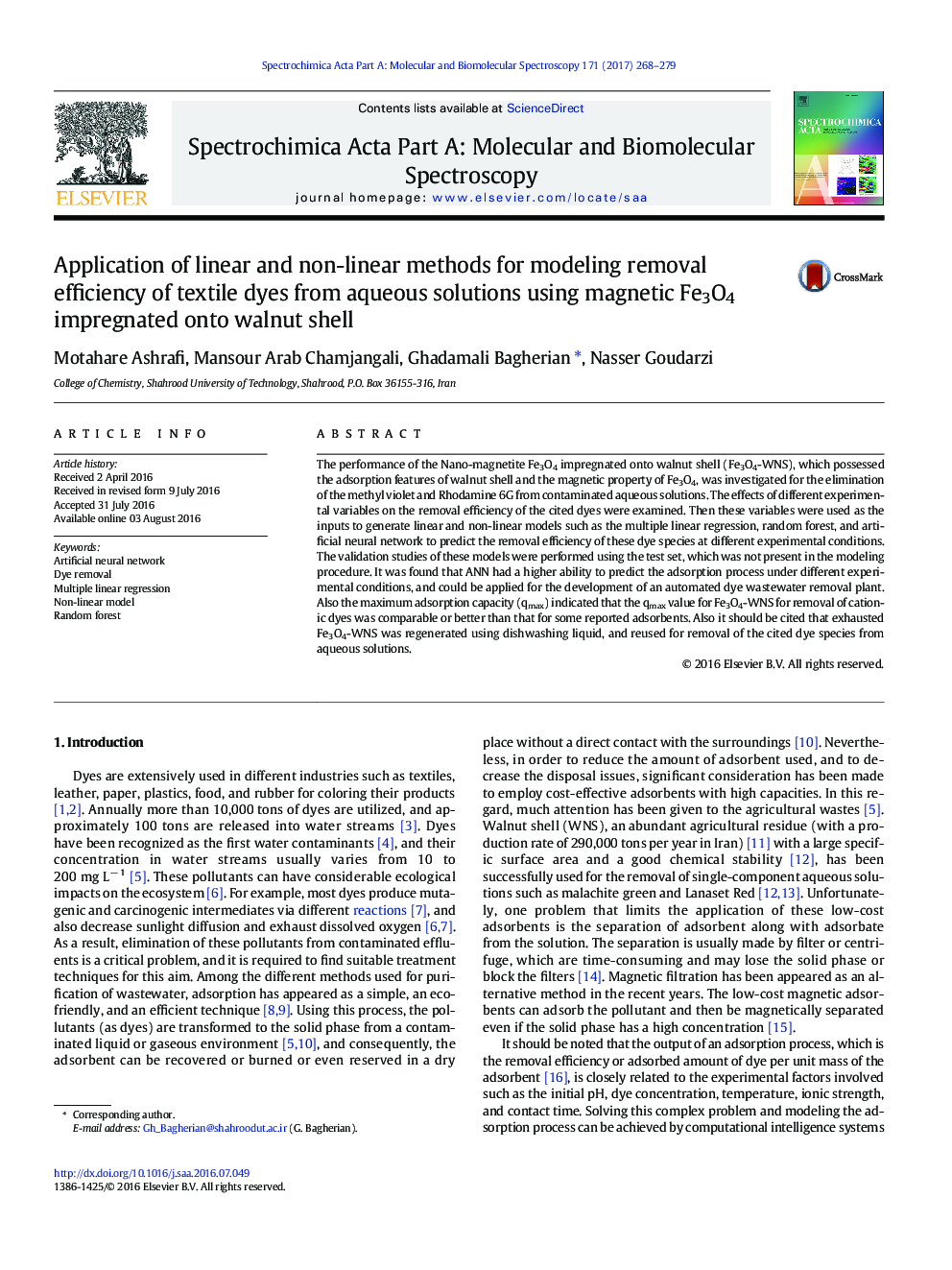| Article ID | Journal | Published Year | Pages | File Type |
|---|---|---|---|---|
| 1230015 | Spectrochimica Acta Part A: Molecular and Biomolecular Spectroscopy | 2017 | 12 Pages |
•Magnetic walnut shell was used as adsorbent with high performance for removal of two dyes from different classes.•The adsorption process was successfully modeled by linear and nonlinear methods.•Based on FT-IR spectra the adsorption mechanism was investigated.•The proposed adsorbent was regenerated using dishwashing liquid as a cheap and available solvent.
The performance of the Nano-magnetite Fe3O4 impregnated onto walnut shell (Fe3O4-WNS), which possessed the adsorption features of walnut shell and the magnetic property of Fe3O4, was investigated for the elimination of the methyl violet and Rhodamine 6G from contaminated aqueous solutions. The effects of different experimental variables on the removal efficiency of the cited dyes were examined. Then these variables were used as the inputs to generate linear and non-linear models such as the multiple linear regression, random forest, and artificial neural network to predict the removal efficiency of these dye species at different experimental conditions. The validation studies of these models were performed using the test set, which was not present in the modeling procedure. It was found that ANN had a higher ability to predict the adsorption process under different experimental conditions, and could be applied for the development of an automated dye wastewater removal plant. Also the maximum adsorption capacity (qmax) indicated that the qmax value for Fe3O4-WNS for removal of cationic dyes was comparable or better than that for some reported adsorbents. Also it should be cited that exhausted Fe3O4-WNS was regenerated using dishwashing liquid, and reused for removal of the cited dye species from aqueous solutions.
Graphical abstractFigure optionsDownload full-size imageDownload as PowerPoint slide
